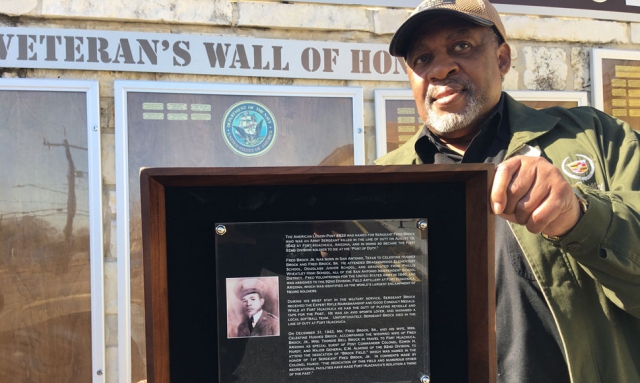
In honor of the services of African-American veterans, American Legion posts are telling the story of who their post is named after.
As we honored Martin Luther King last month and now we enter the month of February, Black History Month, it’s important to remember the sacrifices of the Buffalo Soldiers, the Harlem Hellfighters, the Tuskegee Airmen, the Marines of Montford Point, and the African-American men and women who have served their nation with honor and distinction. They are the substance that helped mold America into the nation that we are today. And I am proud that so many African-Americans continue to serve America in The American Legion.
During Black History Month, many American Legion posts are using this time of celebration and remembrance to learn about and tell the story of their post’s namesake. The following are a few examples:
Otis Stone Post 354 in Evansville, Ind., was chartered in 1929. Stone, a Kentucky native who moved to Evansville when he was 20, went to France as an Army mess sergeant in June 1918. He developed pneumonia over the winter and died in January 1919. His name is on the city’s World War I monument, dedicated in 1926, listed as “colored.” Only one other name is listed the same. Last February for Black History Month, Post 354 Commander and Adjutant William VanHooks Jr. shared the history of Stone on a local radio station. He read a short bio of Stone and shared information about Post 354 today, including its programs and services.
Daniel W. Dowling American Legion Post 769 in Ambler, Pa., was founded in 1945 by a group of 18 African-American veterans returning from World War II. Post 769 is named for the first African-American from the area to volunteer for Civil War service with the Union Army’s 24th U.S. Colored Troop Infantry Regiment. The post held its 11th annual Martin Luther King Junior Day breakfast with 400 in attendance.
Fred Brock Post 828 in San Antonio. U.S. Air Force veteran Al Alford joined The American Legion seven years ago and soon began to wonder about a name he encountered each time he stepped into Post 828.
Who was Fred Brock?
Through research, Alford, now commander of the 320-member post bearing Brock’s name in District 20, learned that Brock was the first to lose his life while on duty with the Army’s 92nd Infantry Division – the famed “Buffalo Soldiers” – during World War II. Brock was killed, Alford discovered, by friendly fire during a training exercise on Aug. 18, 1943, while installing lines for a field telephone system at Fort Huachuca, Ariz.
Alford learned that Brock had graduated from San Antonio’s Wheatley High School in 1940 and enlisted in the Army. He was a model soldier and moving well through the ranks when tragedy struck. He received the Expert Rifle Marksmanship and Good Conduct Medals.
Post 828 sits along the route for San Antonio’s annual Martin Luther King Day parade, which draws hundreds of thousands, making the name Fred Brock visible.
Post 828’s centennial profile page at www.centennial.legion.org explores more of its history, and Alford is urging others to collect and share theirs as The American Legion’s 100th anniversary nears.
The centennial profile page “is a very important tool – for retention, as well, because when you look at it and build a photo gallery you can show them: you’re a part of this post’s history now,” Alford said. “In addition, many members don’t know the history themselves. When they look at a centennial post, it gives them a sense of pride.”
- Dispatch

